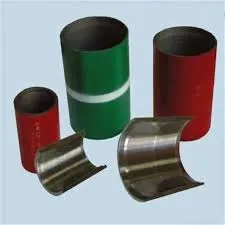- Afrikaans
- Albanian
- Amharic
- Arabic
- Armenian
- Azerbaijani
- Basque
- Belarusian
- Bengali
- Bosnian
- Bulgarian
- Catalan
- Cebuano
- Corsican
- Croatian
- Czech
- Danish
- Dutch
- English
- Esperanto
- Estonian
- Finnish
- French
- Frisian
- Galician
- Georgian
- German
- Greek
- Gujarati
- Haitian Creole
- hausa
- hawaiian
- Hebrew
- Hindi
- Miao
- Hungarian
- Icelandic
- igbo
- Indonesian
- irish
- Italian
- Japanese
- Javanese
- Kannada
- kazakh
- Khmer
- Rwandese
- Korean
- Kurdish
- Kyrgyz
- Lao
- Latin
- Latvian
- Lithuanian
- Luxembourgish
- Macedonian
- Malgashi
- Malay
- Malayalam
- Maltese
- Maori
- Marathi
- Mongolian
- Myanmar
- Nepali
- Norwegian
- Norwegian
- Occitan
- Pashto
- Persian
- Polish
- Portuguese
- Punjabi
- Romanian
- Russian
- Samoan
- Scottish Gaelic
- Serbian
- Sesotho
- Shona
- Sindhi
- Sinhala
- Slovak
- Slovenian
- Somali
- Spanish
- Sundanese
- Swahili
- Swedish
- Tagalog
- Tajik
- Tamil
- Tatar
- Telugu
- Thai
- Turkish
- Turkmen
- Ukrainian
- Urdu
- Uighur
- Uzbek
- Vietnamese
- Welsh
- Bantu
- Yiddish
- Yoruba
- Zulu
bull plug wellhead
Understanding Bull Plug Wellheads A Key Component in Oil and Gas Extraction
In the oil and gas industry, the wellhead serves as a critical interface between the wellbore and the surface. Among its various components, the bull plug wellhead plays a vital role in ensuring the integrity, safety, and efficiency of drilling operations. This article delves into the significance of bull plug wellheads, their functions, and the advantages they offer in the extraction of hydrocarbons.
A bull plug wellhead is designed to provide a strong sealing mechanism in the production string. Typically made from high-strength materials that can withstand extreme pressures and temperatures, it acts as a barrier that prevents the escape of hydrocarbons from the wellbore. This sealing capability is crucial to maintaining the well's pressure and preventing environmental contamination, which could occur if oil or gas were to escape into the surrounding environment.
One of the primary functions of a bull plug is to facilitate easy access to the well for maintenance and monitoring purposes. When operators need to perform repairs or inspections, the bull plug can be quickly removed, allowing access to the wellbore. This characteristic not only enhances the efficiency of maintenance activities but also reduces downtime, which is a critical factor in the overall cost-effectiveness of oil and gas operations.
bull plug wellhead

Moreover, the bull plug wellhead is essential for managing production flow
. As the well begins to produce oil or gas, the bull plug can be adjusted to control the flow rate and pressure. This adaptability is vital for optimizing production and ensuring that the extraction process aligns with the geological characteristics of the reservoir. By managing the flow effectively, operators can maximize yield while also safeguarding the longevity of the well.Additionally, bull plug wellheads come equipped with various safety features that are paramount in an industry where operational risks are high. These features include pressure relief valves, vents, and automatic shutoff systems designed to activate in the event of an emergency. Such mechanisms not only protect the personnel on-site but also mitigate the risk of catastrophic events, such as blowouts or leaks, that can have devastating effects on both human lives and the environment.
In recent years, the industry has witnessed advancements in the design and materials used for bull plug wellheads. Innovations such as corrosion-resistant coatings and advanced sealing technologies have improved their durability and performance in harsh operational conditions. As exploration and extraction activities continue to push the boundaries of technology, the importance of reliable and robust wellhead systems cannot be overstated.
In conclusion, the bull plug wellhead is a fundamental component in the oil and gas extraction process. Its ability to provide a secure seal, facilitate maintenance, manage production flow, and ensure safety makes it indispensable. As the industry evolves, ongoing improvements in bull plug technology will continue to enhance operational efficiency, safety, and environmental sustainability, ultimately driving the future of energy production.
-
Tubing Pup Joints: Essential Components for Oil and Gas OperationsNewsJul.10,2025
-
Pup Joints: Essential Components for Reliable Drilling OperationsNewsJul.10,2025
-
Pipe Couplings: Connecting Your World EfficientlyNewsJul.10,2025
-
Mastering Oilfield Operations with Quality Tubing and CasingNewsJul.10,2025
-
High-Quality Casing Couplings for Every NeedNewsJul.10,2025
-
Boost Your Drilling Efficiency with Premium Crossover Tools & Seating NipplesNewsJul.10,2025







